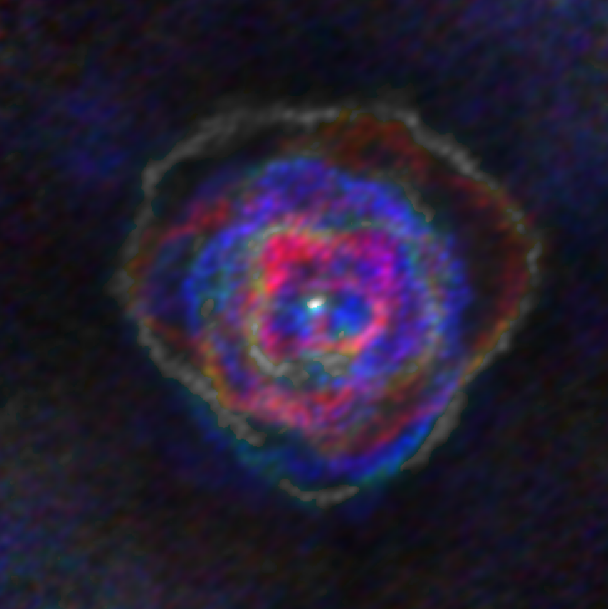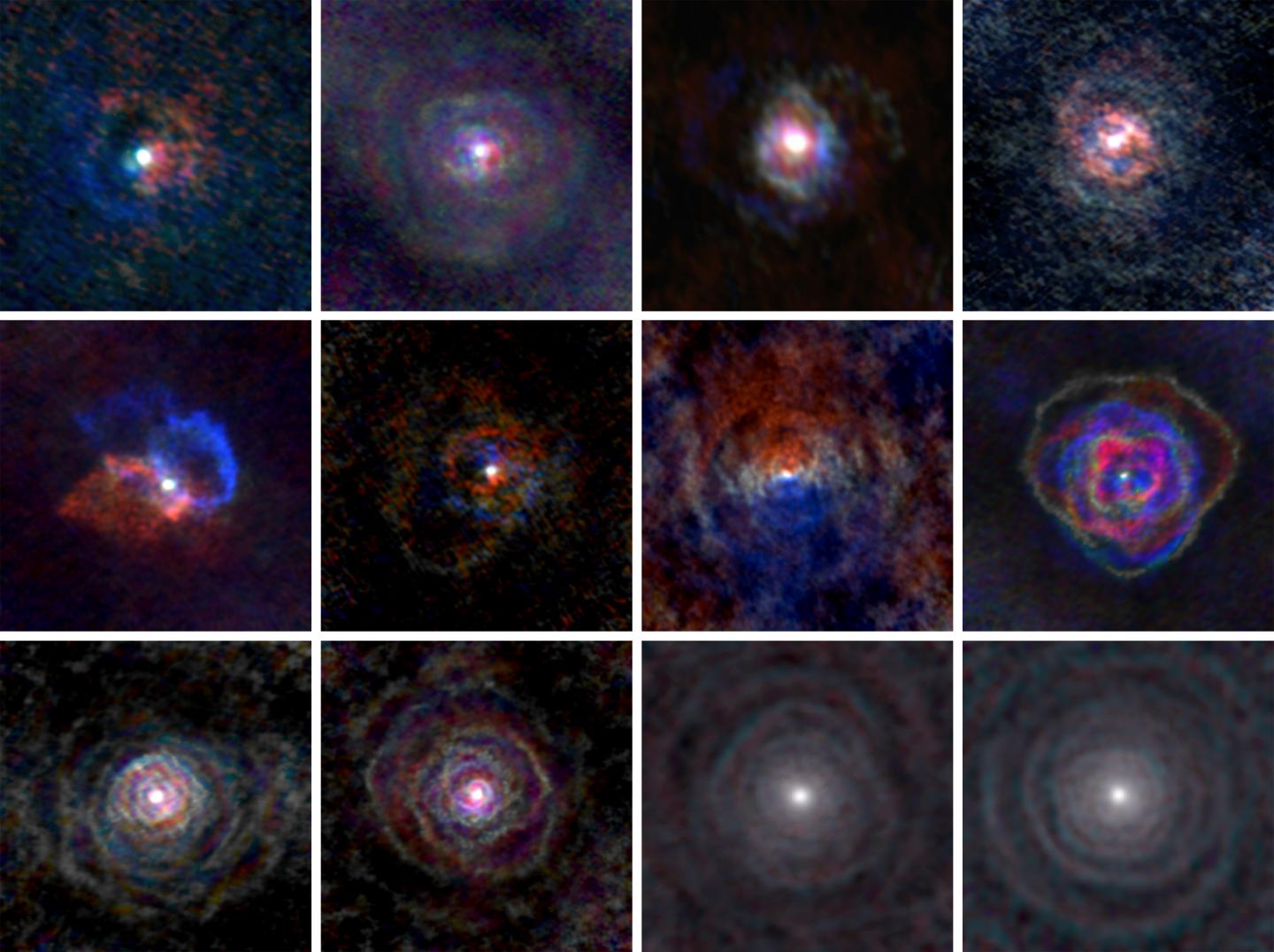Stars paint stunning nebulas with stellar winds thanks to cosmic companions
Each star system is a unique paintbrush in the cosmos, and astronomers are finally beginning to understand why.
In new research, a team of scientists focused on a dozen cool red giant stars, the evolutionary stage our sun will reach in a few billion years. Such stars are constantly producing a stellar wind, a constant stream of particles that flings the star's mass out into space. Because scientists haven't been able to study such winds in detail before, they've always assumed stellar winds are spherical, just like the stars they come from. But it turns out, companion stars and even planets change the shape of a star's stellar wind — and the evidence is in the stunningly unique nebulas surrounding these stars.
"Our new observational data shapes a much different story of individual stars, how they live, and how they die," Carl Gottlieb, an astronomer at the Harvard Smithsonian Center for Astrophysics and coauthor on the new study, said in a institutional statement. "We now have an unprecedented view of how stars like our sun will evolve during the last stages of their evolution."
Related: 50 fabulous deep-space nebula photos
The astronomers used the Atacama Large Millimeter/submillimeter Array (ALMA) in Chile, an arrangement of dozens of radio dishes, in order to photograph the stellar winds surrounding a dozen cool red giants. And because the scientists studied each one the same way with the same instrument, they knew they could compare the stellar winds more reliably than previous research.
"We were very excited when we explored the first images," Miguel Montargès, an astronomer at KU Leuven in Belgium and coauthor on the new research, said in a university statement. "Each star, which was only a number before, became an individual by itself. Now, to us, they have their own identity. This is the magic of having high-precision observations: stars are no longer just points anymore."
From the images, the researchers identified a few categories of stellar wind shapes: disks, spirals and cones. The patterns seem to match those formed by planetary nebulas, the shells of glowing dust surrounding a star. And the stellar wind patterns told the scientists that the shapes weren't random, so the astronomers modeled what the winds might look like given specific stellar or planetary companions too small for the scientists to see directly.
Breaking space news, the latest updates on rocket launches, skywatching events and more!
"Just like a spoon that you stir in a cup of coffee with some milk can create a spiral pattern, the companion sucks material towards it as it revolves around the star and shapes the stellar wind," Leen Decin, an astronomer also at KU Leuven and lead author on the new research, said in the same statement. "All of our observations can be explained by the fact that the stars have a companion."
The new, more complex model of stellar winds means that scientists' estimates of how much matter these stars lose may need recalculation, the researchers said.
And the new study offers a peek at our own sun's future as well, the scientists said.
"Jupiter or even Saturn — because they have such a big mass — are going to influence whether the sun spends its last millennia at the heart of a spiral, a butterfly, or any of the other entrancing shapes we see in planetary nebulae today," Decin said. "Our calculations now indicate that a weak spiral will form in the stellar wind of the old dying sun."
The research is described in a paper published in the Sept. 18 issue of the journal Science.
Email Meghan Bartels at mbartels@space.com or follow her on Twitter @meghanbartels. Follow us on Twitter @Spacedotcom and on Facebook.

Meghan is a senior writer at Space.com and has more than five years' experience as a science journalist based in New York City. She joined Space.com in July 2018, with previous writing published in outlets including Newsweek and Audubon. Meghan earned an MA in science journalism from New York University and a BA in classics from Georgetown University, and in her free time she enjoys reading and visiting museums. Follow her on Twitter at @meghanbartels.


